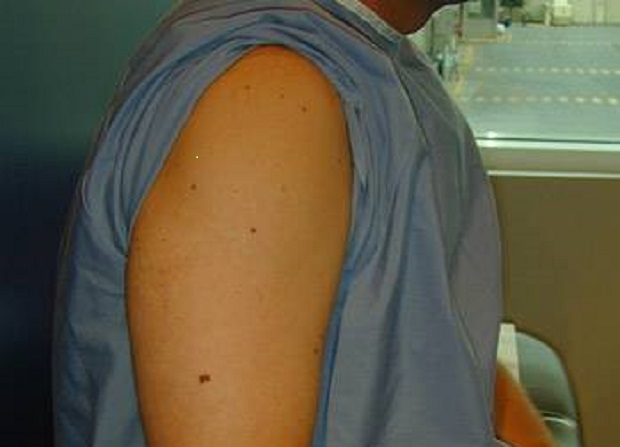Counting counts.

If you have more than 11 moles on your right arm, you could be at a higher risk for skin cancer, according to researchers at King’s College London.
“The findings could have a significant impact for primary care, allowing GPs (family physicians) to more accurately estimate the total number of moles in a patient extremely quickly via an easily accessible body part,” said author Simone Ribero. “This would mean that more patients at risk of melanoma can be identified and monitored.”
The more moles you have on your right arm is an indicator of total moles on your body.
Women with more than “11 (moles) on their right arm were more likely to have over 100 on their body in total, meaning they were at a higher risk of developing a melanoma,” according to King’s.
READ MORE: Canadian skin cancer rates not a cancer success story
The study looked at more than 3500 Caucasian female twins.
Researchers and staff compared skin cancer risk to mole counts on 17 parts of the body. The results were published in the British Journal of Dermatology.
Moles can be both flat and raised, and don’t get them mixed up with freckles. It is important to note that some melanoma patients do not have any moles. Melanoma is the most deadly form of skin cancer.
According to the Canadian Cancer Society, “incidence rates of melanoma have increased in both men and women over the past several decades.”
Melanoma risks according to Canadian Cancer Society:
- Exposure to ultraviolet (UV) radiation through exposure to sunlight, tanning beds and sun lamps
- Number and type of moles
- Having a fair complexion
- Personal and family history of skin cancer
- A weakened immune system
- A history of severe blistering sunburn
Researchers say these finding could help family doctors more easily identify those at risk for developing melanoma.
- B.C. to ban drug use in all public places in major overhaul of decriminalization
- 3 women diagnosed with HIV after ‘vampire facials’ at unlicensed U.S. spa
- Solar eclipse eye damage: More than 160 cases reported in Ontario, Quebec
- ‘Super lice’ are becoming more resistant to chemical shampoos. What to use instead





Comments